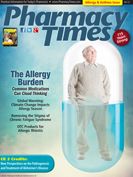Publication
Article
Pharmacy Times
Pharmacists and the Patient-Centered Medical Home, A New Way of Thinking
Author(s):
Do we have enough money and resources to do the right thing for patients?
Can we truly change the US health care system to deliver improved care at a lower cost? I know conventional wisdom says we can. In fact, our profession is counting on it. We use studies that demonstrate the increased cost of treating adverse drug events to justify payment for pharmacist-delivered medication therapy management. But, will it really save money in the end? I sure hope so. I’ve taken on a new job that I hope will dem--onstrate that, but more about that later.
What got me thinking were several Wall Street Journal articles that talked about how physician practices are strug- gling to meet payroll as they upgrade their practices to meet current governmental expectations. “Scott Hammond is doing everything modern doctors are supposed to be doing. But now Dr. Hammond is wondering, ‘Is this any way to keep a prac- tice going?’” is how one opens. The article went on to describe some of the changes made in the practice, with Dr. Hammond stating that his new practice model “is not sustainable under the current payment system.” His dilemma is being faced by medical practices, around the country as we transition to new payment mechanisms. Many physician practices are wondering if there is enough money available to pay for the services being required. I don’t know the answer to that question, but as I engage in promoting a new model of providing pharmacy services, it seems like we’d better find an answer.
Another article, “Better Care for Patients but Long Staff Hours,” describes the problem faced by medical practices as they try to act like a “medical home” model. It pointed out that the new prac- tice model is much more labor intensive than traditional primary care practice. Perhaps this will not be true for a phar- macy practice, but I think that we may find out the same thing. For some time now, we have been led to believe that with new technology we will be able to do more work with fewer resources.
My own experience belies this idea. At best, we may be able to do more work with the same resources. As I engage in trying to change the pharmacy practice model, my focus will be to enable the pharmacist to do the RIGHT thing that the patient and other health professionals need from the pharmacist. I do believe we have enough money to do the right thing.
At least US Surgeon General Regina Benjamin believes that using a pharmacist with the patient-centered medical home (PCMH) is cost-effective. In a cover letter she lent support to the recently released US Public Health Service Report “Improving Patient and Health System Outcomes Through Advanced Pharmacy Practice.”1 She noted that pharmacists can improve quality, contain costs, and increase access to care.
The report itself has 4 focus points: 1) Pharmacists need to be integrated into the health care system as health care providers; 2) Pharmacists need to be recognized as health care providers within the Social Security Act; 3) Current compensation models need to cover the pharmacist’s expanded role; and 4) The literature demonstrates the value of advanced pharmacy practice on clinical and financial outcomes.
Now we need to work on bringing the report to the attention of other health team members, legislators, and decision- makers.
We also have a growing number of case studies documenting what happens when pharmacists become care providers and team members. That practice of one of my colleagues was recently described as “building medical homes for patients with chronic conditions.”2 This article discussed how a private payer has become a partner in a chronic disease management program that includes pharmacists. Whether or not we get CMS recognition of pharmacists as providers at the state and local level, such recognition is occurring—and payment follows.
Now back to my new position. My project will integrate pharmacists into different health care venues and measure their value. The 1 venue most important to me personally is the integration of a community pharmacy and a physician office into a PCMH. We know that having pharmacists on a team improves care. If we can show that we can use community pharmacists in this role and that having the pharmacist see patients at the office or at the community pharmacy as appropriate adds more value, it should go a long way in demonstrating to others what we already know: community pharmacists make important health care contributions.
I hope we can show that those contributions increase when the community pharmacist is integrated into and accountable to the team. I hope that we will find that a new practice model for the community pharmacist is both cost-effective for the health care system and a rewarding practice for the pharmacist—because pharmacists are now doing the right things for patients. PT
Mr. Eckel is a professor at the Eshelman School of Pharmacy, University of North Carolina at Chapel Hill. He is past executive director of the North Carolina Association of Pharmacists.
References
1. Giberson S, Yoder S, Lee MP. Improving Patient and Health System Outcomes Through Advanced Pharmacy Practice: A Report to the US Surgeon General. Office of the Chief Pharmacist, U.S. Public Health Service, 2011. www.usphs.gov/corpslinks/pharmacy/comm/2011AdvancedPharmacyPracticereRorttotheUSSG.pdf.
2. Collins S. Pharmacy Today. March 2012:68-70.







